Personnel from the Royal Navy recently joined the US Navy for advanced virtual training of Carrier Strike Group operations at Naval Air Station Oceana in Virginia Beach, Virginia, according to a press release.
More than 100 sailors, soldiers, aircrew, and marines from Commander UK Strike Force and UK Carrier Strike Group participated in the United States Fleet Synthetic Training period (FST-J).
This marked the first time that the Royal Navy’s Commander Strike Force, Rear Admiral Robert Pedre, and his battle staff took part in this certification period that all US Navy Strike Groups undergo in preparation for front-line deployment.
The training integrates real-world, in-person elements with virtual reality, simulation, and other technologies, allowing military personnel to sharpen their skills in various warfighting scenarios. Ships, personnel, air squadrons, and other military arms, whether at sea or alongside, “plug in” to a networked battle to establish battle rhythms and enhance operational readiness.
The joint exercise underscores the increasing cooperation between the UK and US navies, moving from interoperability to interchangeability, and also involved the US Marine Corps. Rear Admiral Pedre served as the Combined Forces Maritime Component Commander for three Carrier Strike Groups – the HMS Prince of Wales CSG, the USS Harry S Truman CSG, and the USS Gerald R Ford CSG.
Other commands participating in the exercise included US Carrier Strike Group 4, a patrol squadron, submarines, supply and logistics ships, the 178th Wing, the 337th Air Control Squadron, and the 960th Airborne Air Control Squadron.
Rear Admiral Pedre commented on the significance of the training, stating, “The first ever participation of the Commander UK Strike Force battle staff alongside Carrier Strike Group in FST-J represents a significant milestone in advancing Royal Navy – US Navy interchangeability.”
At the UK Defence Journal, we aim to deliver accurate and timely news on defence matters. We rely on the support of readers like you to maintain our independence and high-quality journalism. Please consider making a one-off donation to help us continue our work. Click here to donate. Thank you for your support!


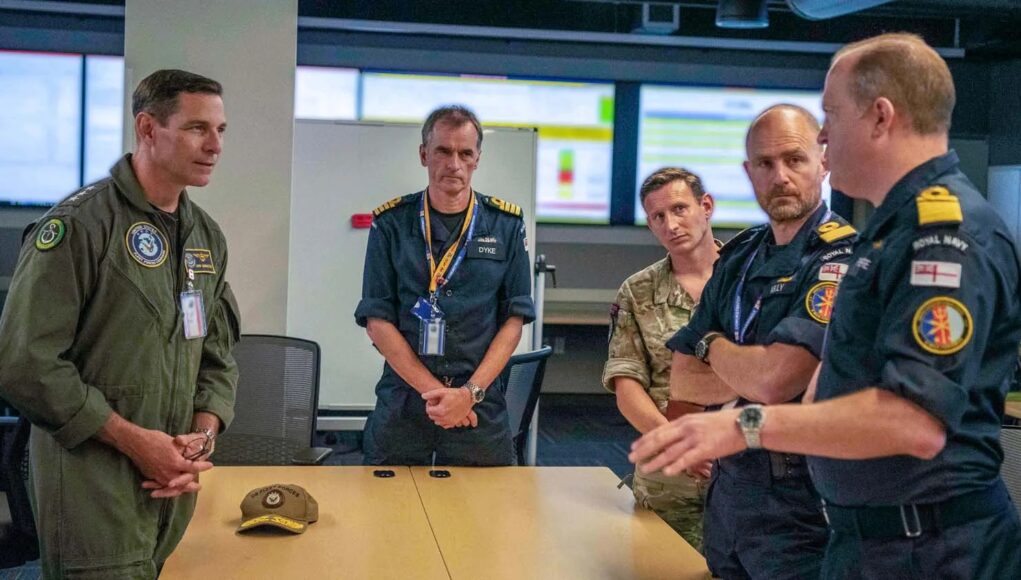
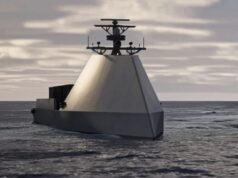
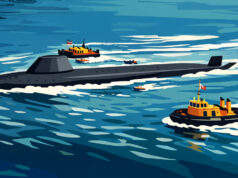
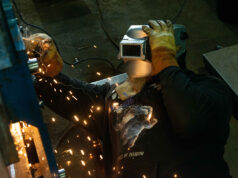
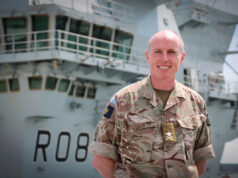
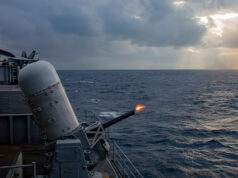
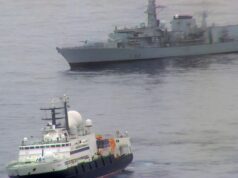

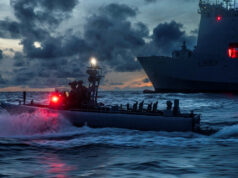
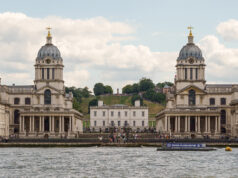
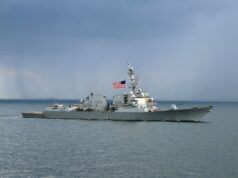

Perhaps the next CSG table-top exercise could take place in Scotland, because that’s where our two flat-tops seem to spend most of their time? When I served on 814 and 820 NAS, Sea King ASW squadrons, aboard the three CVSs we deployed two or three times every year. The QEC seem to be tied to the wall for months at a time with lots of maintenance but no sea time. It’s a fact that the Crabs don’t like going to sea!
The lack of even local at sea time is rather odd.
Even if they were sailing somewhere low threat they could have ASW Merlin’s embarked and perform an Invincible type role.
Given the shortage of ASW frigates some lateral thinking and tasking is required. Otherwise the two flat tops are soaking up crews……for what outputs?
Ha, You’re not wrong there but “times is ard” and things got broke. Oh and Cream first, jam on top.😁
Yeah but the US are now setting challenges. They have started by keeping some of their kit at sea for two years – just rotating the crew 😀 Perhaps we should try and keep both flat tops at sea for five years or something. 😂
Given how rarely a new class of Carrier is built, it’s inevitable that there will be engineering challenges and the drive shafts are now fixed so planned service should resume.
Compared to the snag list and cost over runs of the USN Ford class, QEC has been a good outcome.
I wonder how Hermes, Invincible or Ark Royal got into service and overcame their challenges..
Would imagine the fidelity of current simulations is quite impressive in comparison to my experience during the Jurassic Period. 🤔
Hugely beneficial training, only the French Charles de Gaulle CSG has previously benefited from this. The USN treated CSG21 largely as one of its own deployments, which gave critical access to USN replenishment ships and naval facilities in the midst of Covid. Arguably similar access is even more vital for CSG25 as RFA Fort Victoria will be missing, so the groups integral afloat logistics support capability will be very limited and not fit for purpose.